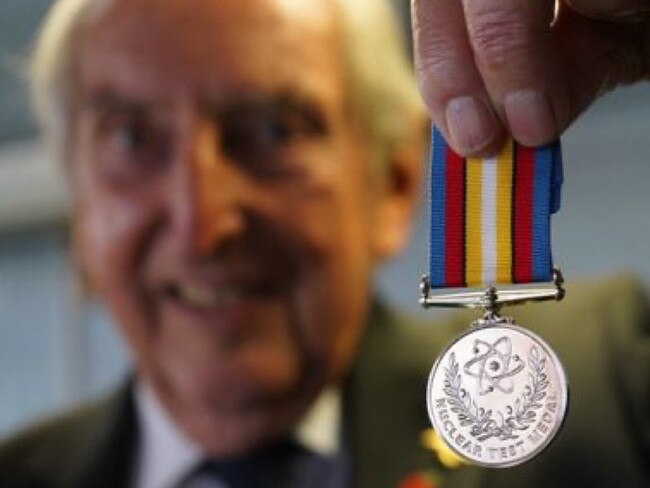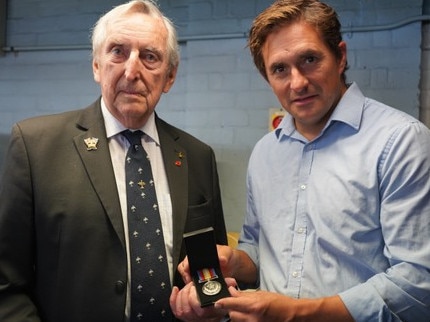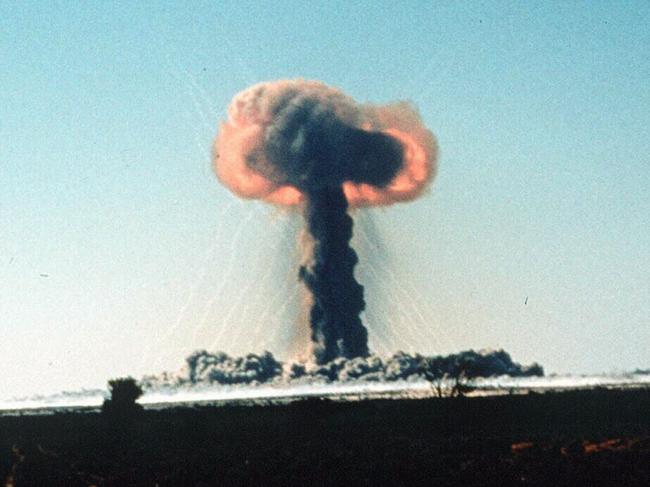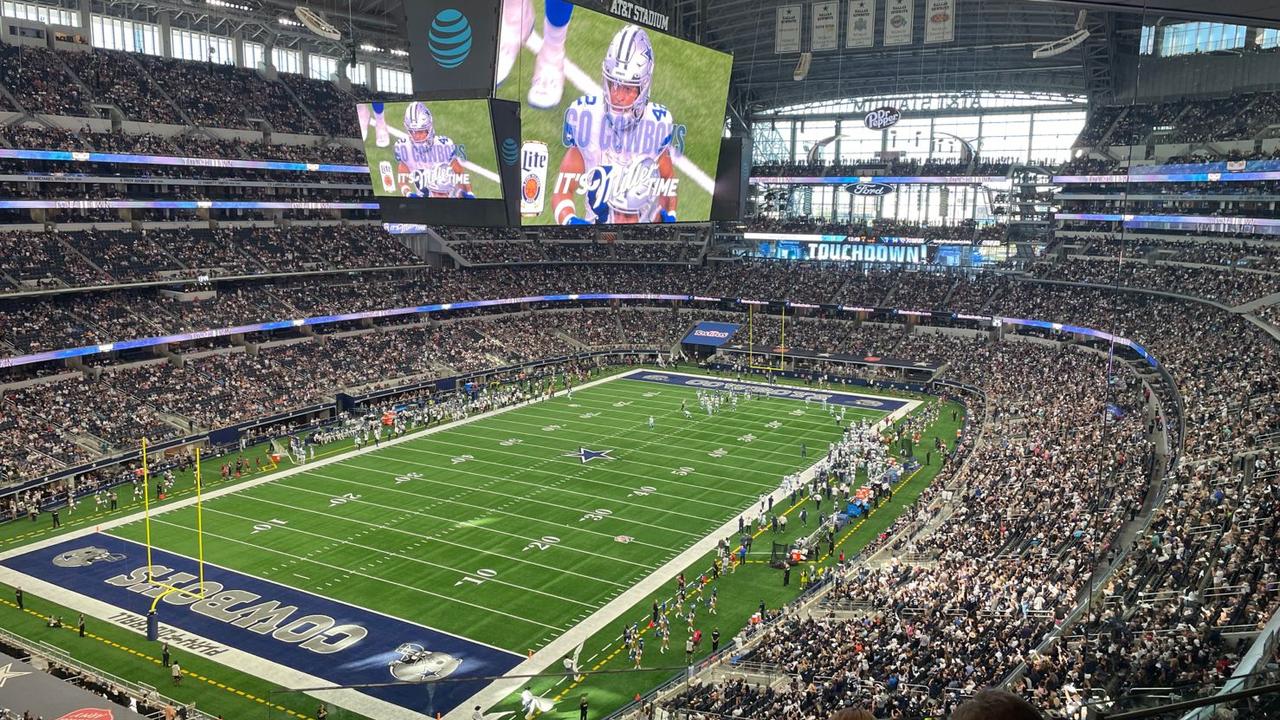Veterans who flew through nuclear mushroom clouds during testing at Maralinga reveal health impacts
Veterans who flew through nuclear mushroom clouds as part of testing in Maralinga nearly 70 years ago, have revealed the devastating health effects.
SA News
Don't miss out on the headlines from SA News. Followed categories will be added to My News.
When 20-year-old British flying officer John Robinson shielded his eyes from a nuclear blast in the South Australian outback, he saw the bones in his hands shine through a “penetrating light”.
Days earlier, he was flying Canberra B.6 bombers through the nuclear mushroom clouds, collecting particles for scientific testing.
In 1956, the retired airman, now 89, was one of about 22,000 Britons and Australians involved in nuclear testing in Australia, led by the UK government, in Maralinga just 800km from Adelaide.
“We were briefed to stand with our backs to the (bomb) tower, with eyes closed and hands held over our eyes,” Mr Robinson said, referring to times they were grounded to watch other aircraft complete testing.
“I can still visualise the skeletal outline of the bones in my fingers despite the precautions we took.”
In 1954, Mr Robinson enlisted in the Royal Air Force for his compulsory national service.
“I thought, well, I’ll see if I can go do something I’ve always wanted to, so the best way to do that is join the forces,” Mr Robinson told The Advertiser.
Classed as an above average pilot by his commanding officer, Mr Robinson chose to volunteer for what was only described as “special duties”.
“One of the requirements was that we had to be single and the other was we had to commit to the job for a couple of years,” he said.
“There were 30 of us herded in this wartime mess at Westonzoyland, Somerset (a UK village) … and we sort of got round talking about it, and it started to leak out what we were actually doing.”

Between 1952 and 1967, the UK detonated 12 nuclear weapons across rural Australia, along with hundreds of “minor experiments” that involved burning radioactive matter, according to the National Museum of Australia website.
After flying seven missions, Mr Robinson was transferred off the program when a regular blood test found dangerous levels of radiation in his body.
He said the military never told him about the possible consequences of radiation sickness, including cancer, which befell many members of RAF Squadron 76.
“There was no broad band about informing the aircrew because we were just told to get on with the job,” Mr Robinson said.
A British Ministry of Defence spokesman said they did not accept those who participated in the nuclear testing were exposed to radiation that “adversely affected their health”, according to several studies.
The spokesman said findings from a fourth study showed that over the follow-up period from 1952-2017, overall mortality and cancer mortality of the test veterans and military controls were lower than the general population of men of the same age in England and Wales.
However, a 1999 study by the British Nuclear Test Veterans Association found 30 per cent of nuclear veterans had died mostly in their 50s from cancer-related illnesses.
“The (UK) Ministry of Defence have a shut door as far as it comes to radiation affecting anyone’s health,” Mr Robinson said.
A Department of Veterans Affairs spokeswoman said the federal government “acknowledges the potential health impacts for veterans who participated in the British Nuclear Test program in Australia, and supports are available in recognition of this”.
The spokeswoman said a 2006 study commissioned by the federal government found death from cancer in nuclear test participants was 18 per cent higher than what would be expected among the general population.

In November last year, the UK government announced Australian and British ex-servicemen could apply for a newly-minted service medal after decades of campaigning by veterans and their widows for official recognition.
About 1800 applications have been approved for the Nuclear Test Medal, including Mr Robinson’s.
On August 23, he became the first serviceman to hold the medal straight off the production line.
“This is bringing to fruition what we’ve been working towards for 70 years,” he said.
Mr Robinson was discharged from the Royal Air Force in 1974.
He retired as a commercial pilot in 1996 aged63 and said he never had significant health complications.
Fellow veteran Rex Kaye, 84, suffered for years in the long shadow of Maralinga.
A retired carpenter and former president of the Australian Ex-Services Atomic Survivors Association, Mr Kaye was stationed about 570km east of Maralinga at Woomera with the Royal Australian Air Force.
As a general hand, he worked all sorts of jobs.
One day in 1961, he was ordered to hose down a plane that arrived from Maralinga.
“I heard the sergeant say to the corporal, ‘take the lad out and wash that aircraft down before the officer comes back to take off again’,” Mr Kaye said.
“He said to me, ‘Now go and let her have it for half an hour, all the way around, and stand 12 to 15 metres away from it because it’s hot’.
“In those days we were never told what ‘hot’ meant, but I found out a little later it was to do with the (nuclear) dust on the aircraft.”
Mr Kaye said he cleaned three “hot” aircraft that year.
He was not given personal protective equipment and no one told him about the risks posed to his health.
“You were told to keep your mouth shut for 30 years,” Mr Robinson said, referring to his obligations under the Official Secrets Act.
In 2000, he was diagnosed with leukaemia and his doctor told him it was most likely related to his time in the Australian Defence Force.
After years of campaigning with fellow veterans, the government issued him and others with a Gold Card in 2017, which fully covers the cost of any and all medical treatment regardless of whether the condition is linked to their service.
Mr Kaye said he would claim his Nuclear Test Medal but was angry about the government’s treatment of veterans of biological contamination.
“You only had to see what they did with Vietnam (veterans) – they wanted to forget everything that went on,” he said, referring to soldiers allegedly affected by chemical exposure to Agent Orange.

The children of nuclear veterans are fighting a different battle altogether.
Alan Owen and Susan Musselwhite’s fathers were British veterans who participated in nuclear tests on Christmas Island in the same period.
They believe they have developed genetic health problems from damage their fathers suffered through radiation exposure.
They have lobbied governments around the world to recognise the legacy of inherited disease through their non-profit Lab Rats International.
“When you speak to the descendants, they all report the same sort of things – auto-immune diseases, eye problems,” Ms Musselwhite said.
Mr Owen’s father died young of heart problems, aged 52.
Similarly, his brother died of heart problems when he was 32 and his older sister was born blind in her left eye.
The pair surveyed descendants and found almost 30 per cent had a similar pattern of chronic health issues, with 50 per cent reporting eyesight and dental problems.
Miscarriages are also unusually high at 29.2 per cent.
Ms Musselwhite said the UK government refused to acknowledge or investigate the possibility of genetic transfer playing a role in her and other descendants’ illnesses.
“If you go to the National Health Service and tell them you have these problems because you’re a descendant, they go ‘this cannot be happening’.
“They don’t have any protocol in place to look after you.
“It’s frustrating because we can see it, but no one else can.
“At the moment we’re concentrating on the medal and getting it to these veterans who are extremely elderly.
“There’s veterans who to this day still have nightmares … they worry for their children and grandchildren.”
Originally published as Veterans who flew through nuclear mushroom clouds during testing at Maralinga reveal health impacts


